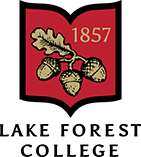 The Might Mississippi River may not start so mighty, but it still supports a vast historical and ecological legacy that can be seen today.
The Might Mississippi River may not start so mighty, but it still supports a vast historical and ecological legacy that can be seen today.
The Mississippi River watershed is enormous. However, this watershed was not an accident. It is a product of millions of years of ecological history. The flow of the Mississippi can be seen below. It starts in Lake Itasca, and then flows northeast for a bit, before heading south all the way down to the Gulf of Mexico.
Topography
Much of the Minnesota Mississippi River Watershed was leveled by glaciers thousands of years ago. This left a flat area perfect for water to carve a path of least resistance. The lower part of the river within Minnesota, traveled through an area not effected by glaciers in the recent past. This area is filled with bluff and rolling hills. However, the melting water from the glaciers helped to carve out areas for water to form. Below is a topographic map of the state of Minnesota. 
Vegetation and Animal Life
This enormous watershed supports and array of life. Around the river itself are wetlands, marshes, prairies, and woodlands. These ecosystems all support a variety of wildlife, some of which is endangered. This fertile ecosystem deserves to be saved as it supports a delicate food web, one in which we are apart of. Below is a vegetative map along with a few of the species that depend on the river and the surrounding land.
To the left is a River Otter. This species is playful and is found any body of water. Their populations have been rebounding since wetlands have been restored.
To the left is a photo of the Bigmouth Buffalo. It is a fish that can live in cloudy and warm water. It can grow to be 3 feet long and weigh 50 pounds.
Above is a Canvasback, which is a type of diving duck. Its habitat is literally an water source. It population is now stabilizing after several years of hunting. The species is showing extraordinary progress.
Delicious Watersheds
As an extra part of my project, I decided to create a map out of food. As I did not want to waste much food, I am happy with how the homemade map turned out. It is composed of frosting, Oreos, sprinkles, blueberries, vegetables, and candy. The map is based off of the three above: the Mississippi River path, the topography, and the different biomes.
Key:
Frosting: Substrate
Oreos: Higher Elevation
Green Sprinkles: Prairie Grassland Biome
Color Sprinkles: Deciduous Forest
Vegetables: Coniferous Forest
Blueberries: Major water sources
Blue Candle: Lake Itasca (Headwater of the Mississippi River)
White Candle: St. Paul/Minneapolis
Pink Candle: St. Croix River and Mississippi River intersection

